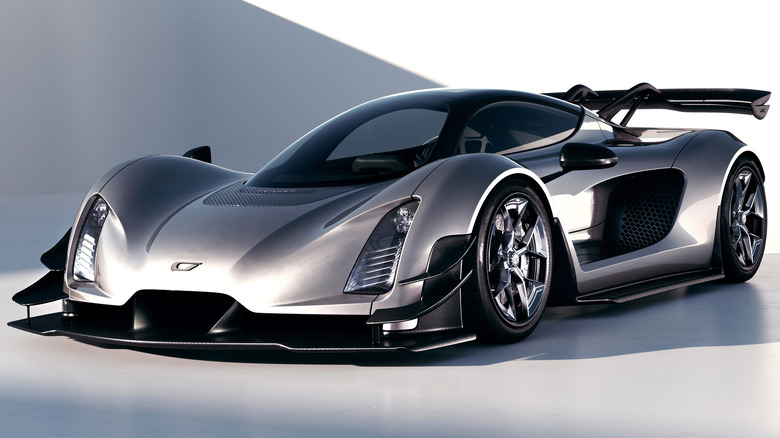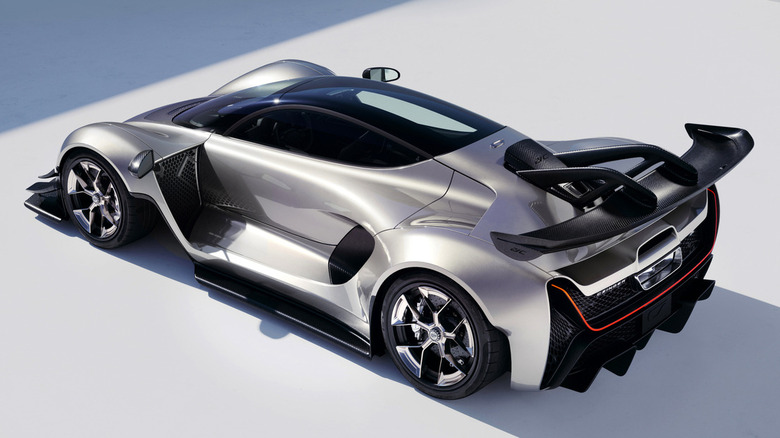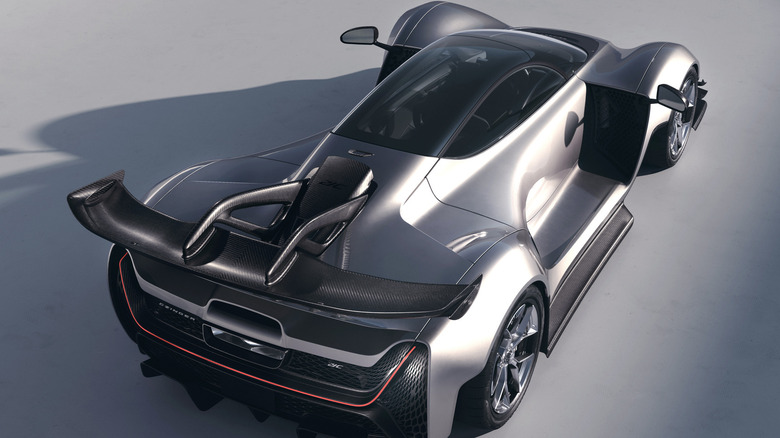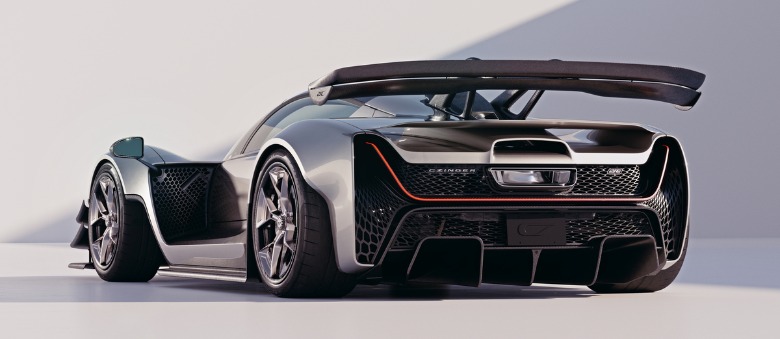Is This Revolutionary 3D Printed Hybrid The Future Of Supercars?
The Czinger 21C is not your typical hypercar. First seen in production form at the 2020 Geneva Auto Show, the 21C is an amalgamation of hair-raising numbers that people crave from an extreme-looking, four-wheeled driving machine. It has a bespoke, rear-mounted 2.9-liter twin-turbocharged flat-plane crankshaft V8 and a hydraulic seven-speed sequential transaxle gearbox developed in-house by Czinger. Capable of pumping out 950 horsepower at a screaming 10,500 rpm on a healthy diet of various-octane gasoline or E85 fuel, you might think those numbers are enough to merit attention. Still, the Czinger 21C has another ace up its sleeve; it happens to be a battery-electric hybrid.
It has two 120 kW electric motors in each front wheel and an F1-derived kinetic motor-generator unit in the rear, all drawing power from an 800-volt electrical system and a 2.8 kWh lithium-titanite battery pack. Boasting a combined output of 1,350 horsepower while weighing no more than 2,900 pounds (1,315 kg), the Czinger 21C is one speedy vehicle.
Record-shattering performance
Czinger claims the 21C accelerates from zero to 60 mph in 1.9-seconds, breaching the Tesla Model S Plaid's crazy straight-line speed, while the Los Angeles-based automaker quotes a 281 mph top speed. In addition, the 21C goes from zero to 196 mph in 8.5 seconds and zero to 248 mph in 21.3 seconds.
The Czinger 21C is so quick that it broke the lap record at Laguna Seca Raceway in August 2021. With American racing driver Joel Miller behind the wheel, the Czinger 21C went around Laguna Seca in a GPS-verified time of one minute, 25.44 seconds (1:24.44), beating the previous record of one minute, 27.62 seconds (1:27.62) of professional race driver Randy Pobst in a McLaren Senna.
According to Motor Trend, the record-breaking lap was courtesy of a track-spec 21C with aero add-ons and a gigantic manually adjustable rear wing that produces above one ton of downforce above 200 mph. But despite its unbelievable performance merits, the Czinger 21C is not all about speed or the pursuit of breaking records. It's also a car that highlights the wonders of 3D printing technology.
3D Printed Manufacturing
The 21C is not Czinger's first attempt at revolutionizing the old-school method of mass-producing cars using traditional assembly lines – pioneered by the late, great Henry Ford. In 2015, Czinger co-founder Kevin Czinger, then head of Divergent Microfactories, debuted the Blade, the world's first 3D-printed supercar. Underneath its jet fighter-inspired styling is a spaceframe made of printed nodes (metal joining points) connected to carbon fiber tubing (per Motor Trend).
But the Czinger 21C is different. It inherited the tandem seating cockpit of the Blade concept, and it grew more bulbous fenders along the way. But its body design, chassis, and components resulted from Czinger's proprietary Divergent Adaptive Production System or DAPS. The system can use different grades and types of metals or alloys to create a printable component designed exclusively by AI software.
With DAPS, a designer can input specific parameters, and the system will create or adapt a part to fit the designer's desired specifications. Once individual parts are created, DAPS can even figure out how the 3D-printed parts could combine to produce a finished chassis. The result is a cacophony of organic-driven shapes with almost zero hard edges, from the ultra-lightweight subframe all the way to the honeycomb heat shield on the exhaust.
What's more, DAPS eliminates the need for huge factories, expensive machines, tooling equipment, and hundreds of technicians to stamp, mold, weld, or fasten thousands of parts in building a car. Czinger's car-building methods are so revolutionary that legacy automakers are taking notice. Motor Trend reports that a particular automaker went to Czinger and asked for a part with parameters that included a 5% reduction in weight (when compared to its predecessor). Czinger ran the parameters through DAPS and made the component with a weight that was a whopping 20% less than the original. The results were so impressive that Czinger won the contract to make the part. It's not a matter of if, but how fast this sort of process will have a major effect on the way parts are designed.



